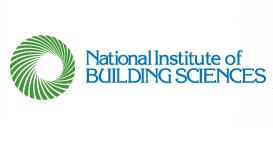National Institute of Building Sciences Issues Second Report on the Value of Mitigation
Highlights Benefits of Investing in Mitigation for Utilities and Transportation Infrastructure
WASHINGTON, D.C. – (RealEstateRama) — The National Institute of Building Sciences issued its latest report in a multi-year study on natural hazard mitigation. The second in a series of interim results, Natural Hazard Mitigation Saves: Utilities and Transportation Infrastructure examines the potential benefits associated with investing in mitigation for select utility and transportation infrastructure.

Natural hazards present significant risks to many communities across the United States. Fortunately, there are measures governments, building owners, developers, tenants and others can take to reduce the impacts of such events. These measures—commonly called mitigation—can result in significant savings in terms of safety, and prevent property loss and disruption of day-to-day life.
The project team sought to use Economic Development Administration (EDA) grants to look at how the agency’s mitigation efforts to address four potential perils and four categories of utilities and infrastructure might benefit communities. Of the 859 EDA grants the project team reviewed, only 16 related to natural-hazard mitigation of utilities and transportation lifelines. Of these, the team acquired sufficient data to estimate benefit cost ratios (BCRs) for 12 mitigation investments.
Because too few EDA grants were available to provide statistical value, the project team modified its objectives to analyze the grants as case studies. Since the grants did not represent all common retrofit measures (particularly in regard to earthquakes), the project team also analyzed potential mitigation measures to address the gaps.
The project team studied 12 EDA grants, including:
- Flood mitigation for roads and railroads (five grants), with BCRs ranging between 2.0 and 11.0 for four grants and one grant exhibiting a BCR of 0.2.
- Flood mitigation for water and wastewater facilities (four grants), which produced BCRs between 1.3 and 31.0.
- Wind mitigation for electric and telecommunications (two grants). These grants were estimated to produce BCRs of approximately 8.5.
- Flood mitigation for electric and telecommunications (one grant). This grant produced an estimated BCR of 9.4.
Note: While not statistically valid, these grants, when viewed as case studies, offer anecdotal evidence of the potential value of such types of mitigation.
In light of the unexpectedly limited grant data, the project team supplemented the analysis of grants by studying a few leading options for natural-hazard mitigation of utilities and transportation infrastructure.
These included:
- Replacing specific water supply pipeline segments to create a “resilient water-supply grid” that better resists earthquakes. (At least two West Coast water utilities are designing a resilient grid.) The project team estimated this measure would save up to $8 per $1 spent, depending on local seismic hazard.
- Strengthening electric substation equipment to better resist earthquake loads and to create a “resilient electric grid.” (At least three West Coast electric utilities are developing a resilient electric grid.) The project team estimated this measure would save up to $8 per $1 spent, depending on local seismic hazard.
- Strengthening highway bridges to better resist earthquake loads. The project team estimated this measure would produce a benefit of $3 per $1 spent.
- Performing prescribed burns in the watershed of water utilities to reduce wildfire and inhibit soil-carrying runoff that can cause turbidity in reservoirs. The project team found that this measure is unlikely to be cost effective, and that water utilities have less-expensive options available to address turbidity resulting from runoff after wildfires.
Natural Hazard Mitigation Saves: Utilities and Transportation Infrastructure is an independent work, funded with the support of public- and private-organizations interested in expanding the understanding of the benefits of hazard mitigation.
The original 2005 report, Natural Hazard Mitigation Saves: An Independent Study to Assess the Future Savings from Mitigation Activities, which was funded by the Federal Emergency Management Agency (FEMA), determined FEMA mitigation grants to have a benefit-cost ratio (BCR) of 4:1.
Despite the specific guidance that the 2005 study BCR represented only a single, very narrow set of mitigation strategies (precisely those funded through FEMA), the original 4:1 ratio has been used to justify all types of mitigation strategies. In January 2018, the Institute released the 2017 Interim Report, which provided an updated examination of the benefits of federal agency grant programs, including the addition of EDA and the U.S. Department of Housing and Urban Development (HUD), resulting in a $6 benefit for every $1 invested. Though not a direct replacement, when used to describe federal grant programs, the 6:1 BCR can be used in place of the original 4:1.
The 2017 Interim Report also included analysis of the benefits of exceeding specific criteria within the 2015 International Building Code (IBC) and theInternational Residential Code (IRC) and the adoption of the 2015 International Wildland-Urban Interface Code (IWUIC). This analysis found a BCR of $4 for every $1 invested in such measures.
To vet the methodology used and ensure the ongoing study’s accuracy, the Institute received input from renowned experts in resilience across all hazard types, including academia, non-profits, government agencies and the private sector. Experts were engaged to conduct the analyses and additional experts were invited to peer-review the results. Over 100 subject matter experts participated in the development and review of the study methodologies and findings.
Download Natural Hazard Mitigation Saves: Utilities and Transportation Infrastructure.













